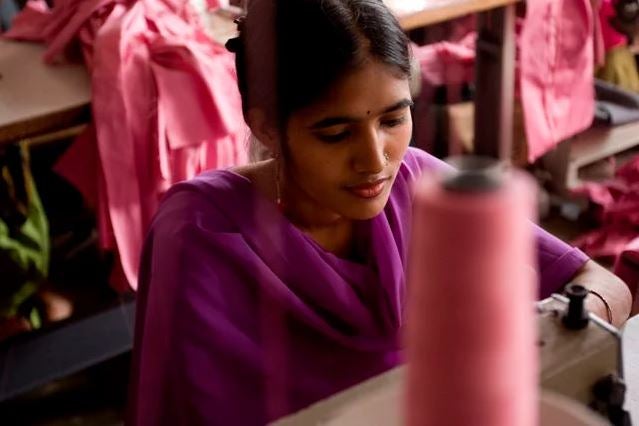
The China sourcing conundrum
In conversations with U.S. and European retailers and brands, ELEVATE – a company formed in 2013 to support corporate social responsibility – finds that apparel buyers rate diversifying away from China as one of their top three sourcing goals.
This is not to suggest that there is a desire to exit China – which currently holds by far the largest share of global apparel trade, at 41 percent – but rather a need to significantly reduce dependence on product from China, owing to rising costs, factory closures, unenthusiastic second generation family ownership, new attitudes about working in factories, and a perception that China wants to move to higher-value manufacturing. Sourcing and procurement organizations feel uncertain, and uncertainty is not a friend of supply chains.
The problem is that for all its uncertainty, China still has a huge base of factories, a well-developed transport infrastructure, and a comprehensive eco-system that supplies cut-and-sew operations, and management that has matured with years of experience. Even if a buyer would like to give another country an opportunity, many corporate risk managers view certain countries or regions as quite challenging for doing business.
South Asia could seize this opportunity by better meeting requirements – besides competitive costs – that are vital to global buyers. These include: (i) quality, which is influenced by the raw materials used, skill level of the sewing machine operator, and thoroughness of the quality control team; (ii) lead time and reliability, which are greatly affected by the efficiency and availability of transportation networks and customs procedures; and (iii) social compliance and sustainability, which has become central to buyers’ sourcing decisions in response to pressure from corporate social responsibility campaigns by non-governmental organizations, compliance-conscious consumers, and, more recently, the increased number of safety incidents in apparel factories.
Surveys of global buyers show that East Asian apparel manufacturers rank well above South Asian firms along these key dimensions, as noted in a new World Bank report on apparel, jobs, trade, and economic development in South Asia, Stitches to Riches (see table). So, what can South Asia, which now accounts for only 12 percent of global apparel trade, do to become a bigger player? An encouraging recent development is that buyers have started collaborating to facilitate new sourcing possibilities – as the case of Bangladesh illustrates.
Bangladesh and social responsibility
Following the Tazreen fire in 2012 (which killed 112 workers) and Rana Plaza building collapse in 2013 (which killed more than 1,000 people), several major retailers and brands left Bangladesh, and those who were not there, decided not to risk the exposure. Yet a number of major U.S. and European companies took action and created the Alliance for Bangladesh Worker Safety (the “Alliance”) and the Accord on Fire and Building Safety in Bangladesh (the “Accord”).
Both groups have been working over the past three years with more than 1,500 factories to help them meet new fire and building safety standards. Both groups have teams on the ground working directly with factories. They have partnered with the IFC and USAID to establish facilities to help factories finance the capital improvements needed to meet the new standards. This is a first, as never before have companies banded together, planned, financed, and managed responsible sourcing initiatives of this scale – without a nongovernmental organization or UN-based organization providing guidance or managing it for them.
It is unclear how successful the government would have been if it had tried to stimulate apparel sector growth through new policies or cross-border trade deals with its neighbors – without first addressing the fire and building safety issue in its factories. But it is clear that the Alliance and Accord have made progress, factory safety is improving, and the Bangladesh apparel industry is not only drawing back those who left after Rana Plaza but also attracting those companies who had opted not to enter.
The Alliance and Accord are working models for how buyers can collaborate to facilitate new sourcing alternatives. The story is still to be written about how government policy can be flexed to channel and support these types of initiatives. As this was a first, one can be hopeful that each subsequent initiative will be better than the last.
Read full report: Stitches to Riches? Apparel Employment, Trade, and Economic Development in South Asia




Join the Conversation